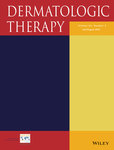Evaluation of relationship between antihypertensive drug usage and dermatoscopic features in patients with keratinizing skin cancer
Abstract
Keratinizing skin cancers including actinic keratoses (AK), in situ squamous cell carcinoma/Bowen's disease/intraepidermal carcinoma (IEC), invasive cutaneous squamous cell carcinoma (cSCC) and keratoacanthoma share similar dermatoscopic features and also reveal different patterns that assist in their diagnosis. Recently epidemiological studies reveal the association between antihypertensive drugs and skin cancer risk, especially cSCC. This study aims to determine the dermatoscopic features of keratinizing skin cancer in patients using antihypertensive drug and compare with non-users. A total of 46 patients with 64 keratinizing skin cancer lesions were included in the study. The demographic, clinical characteristic of patients, the number, duration, localization and dermatoscopic features from each lesion were collected. First, we evaluated the dermatoscopic features according to the histopathologic diagnosis. Then, all patients were divided into two groups as users of antihypertensive drugs and non-users. The dermatoscopic features were compared in terms of antihypertensive drug usage and histopathologic diagnosis in antihypertensive drug users and non-users, separately. The users of anti-hypertensive drugs were 22 (47,8%) and non-users 24 (52,2%). Of the total 64 lesions including 47 AK, 5 IEC, 10 cSCC, and 2 keratoacanthoma were evaluated. White structureless area was found statistically significant in cSCC lesions of patients using antihypertensive drugs (P = .004). This finding in cSCC may be a clue for antihypertensive drug usage and these drugs may be a predisposan factor for dermal fibrosis. Regardless of histopathology, dermatoscopic features show no statistically difference between antihypertensive drug users and non-users (P > .05). Clearer results can be obtained by conducting more detailed and long-term studies.
CONFLICT OF INTEREST
The authors have no conflict of interest to declare. There is no funding sources.
Open Research
DATA AVAILABILITY STATEMENT
Data available on request due to privacy/ethical restrictions.




